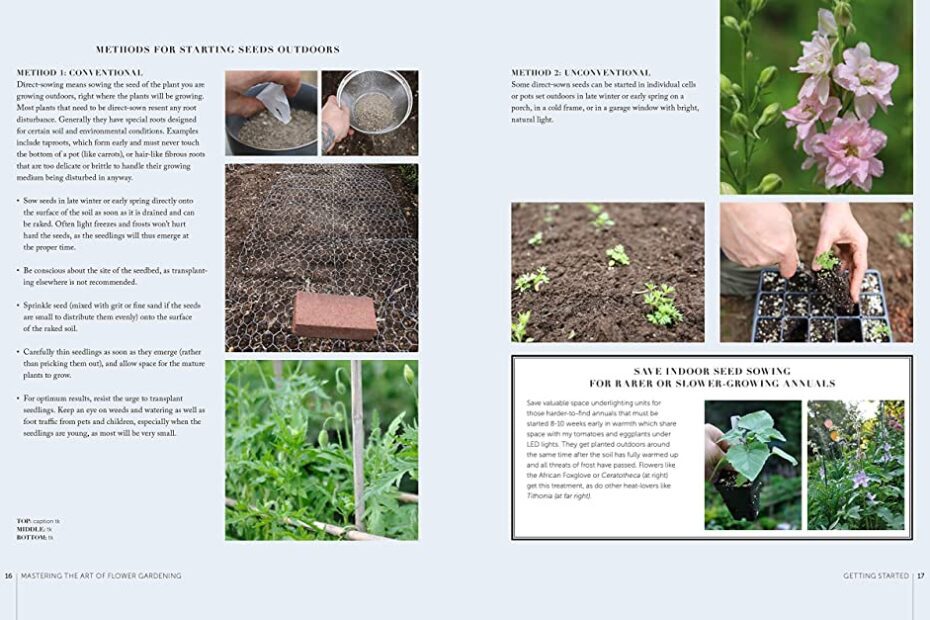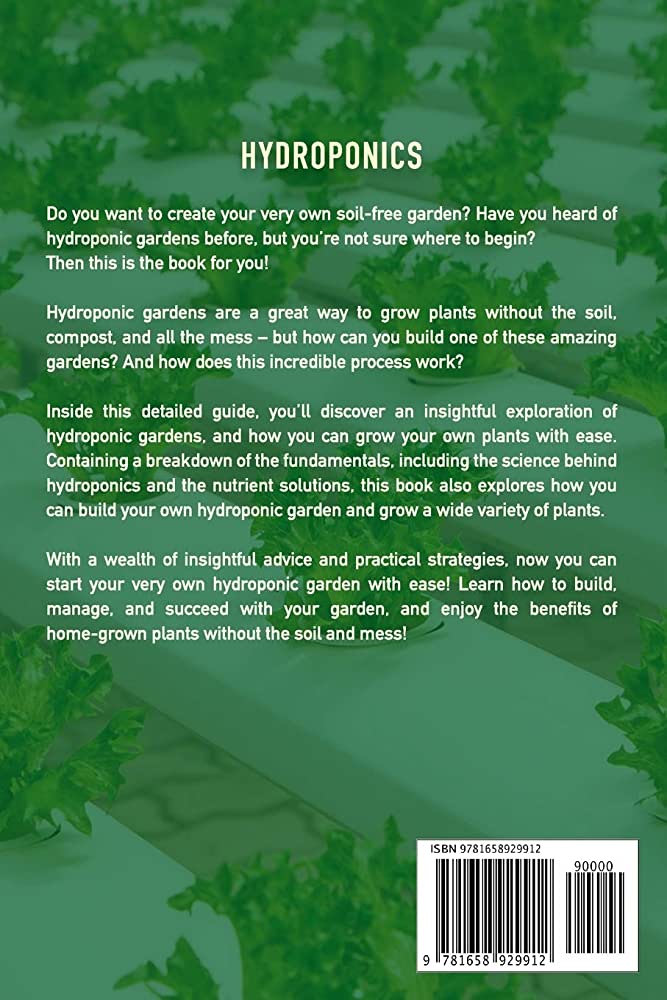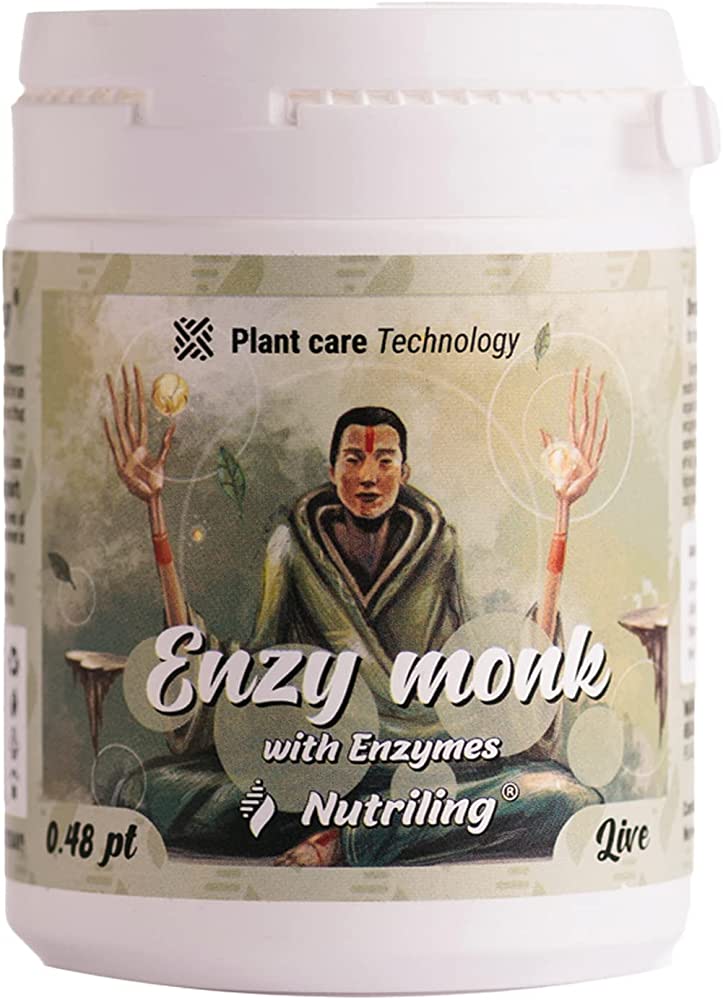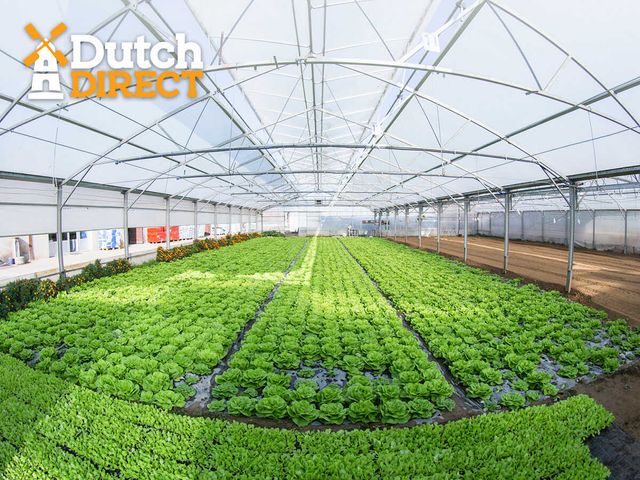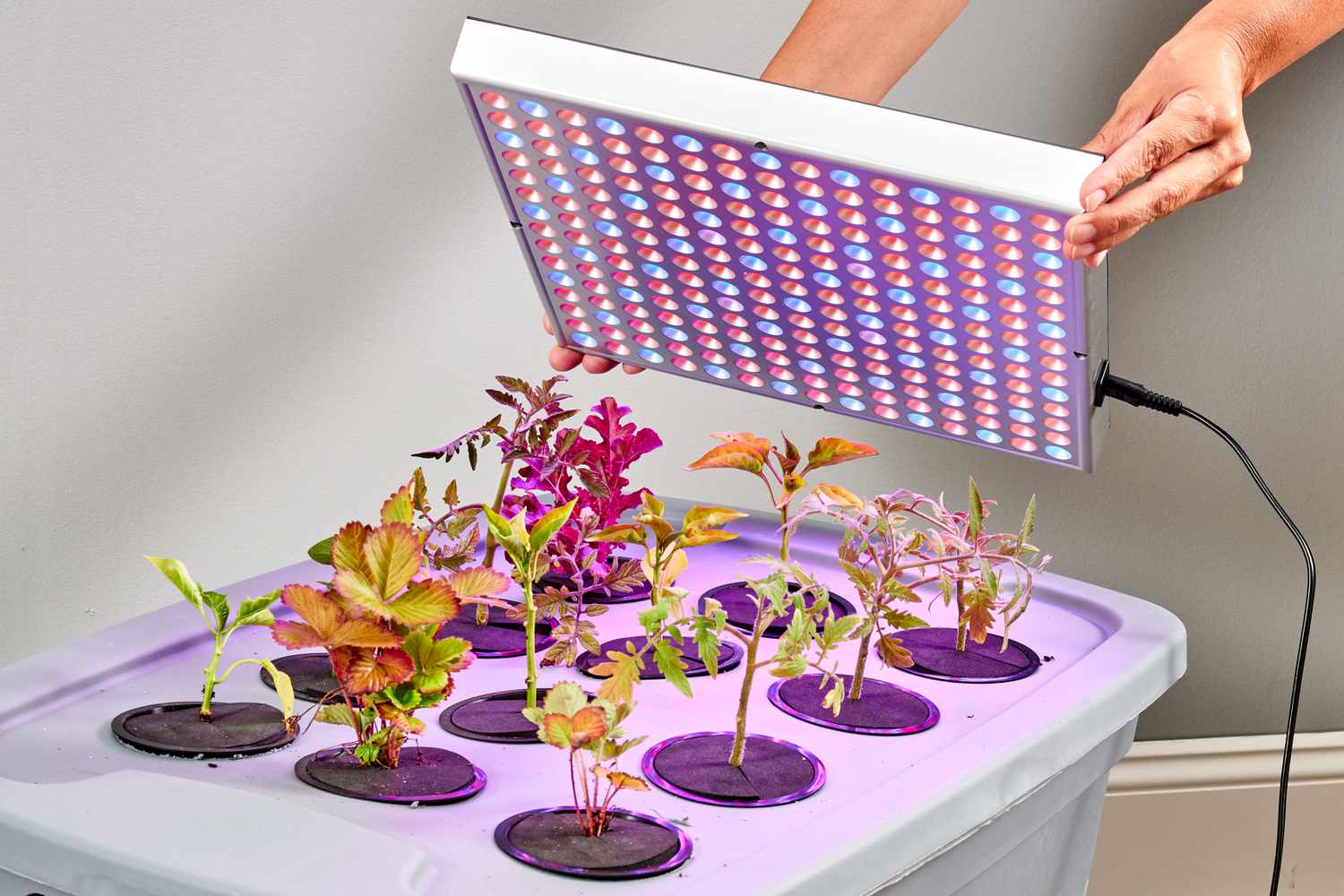Two common seed germination techniques for hydroponic gardening are rockwool cubes and paper towels. Hydroponic gardening methods eliminate the use of soil and instead rely on a nutrient-rich water solution for plant growth.
These techniques allow for a controlled environment where seeds can sprout quickly and efficiently. In this article, we will explore in detail the two germination techniques, their advantages and disadvantages, and how to implement them effectively. Whether you are a beginner or an experienced hydroponic gardener, understanding seed germination is crucial for successful plant growth.

Credit: www.royalqueenseeds.com
Seed Germination Techniques For Hydroponic Gardening
Importance Of Seed Germination In Hydroponic Gardening
Seed germination is the first step towards a successful hydroponic garden. Proper germination of seeds ensures that they grow into healthy plants with a high yield. The importance of seed germination in hydroponic gardening lies in the fact that it determines the growth rate, strength, and overall health of the plant.
A plant grown from a healthy seed germination process will be more resistant to diseases and have a higher nutrient absorption rate, leading to a more significant and healthier harvest.
Factors Affecting Seed Germination
Several factors affect seed germination in hydroponic gardening. Here are some key points to consider:
- Temperature: Seeds require a specific temperature range to germinate correctly. Most vegetable seeds germinate best between 60-75°f.
- Moisture: The right moisture content is crucial for seed germination. If the seeds are too dry, they will not germinate, while too much moisture can cause them to rot.
- Oxygen: Seeds need oxygen to germinate properly. Proper water drainage in hydroponic gardening is crucial to ensure adequate oxygen supply.
- Light: While light isn’t necessary for seed germination, light exposure can determine the direction of the sprout. Some seeds like lettuce and parsley need light to germinate.
Seed Selection For Hydroponic Gardening
Seed selection plays a critical role in hydroponic gardening, as hydroponic plants grow differently than traditional soil-grown plants. Here are some key points to consider when selecting seeds for hydroponic gardening:
- Soil-less mix: Seeds that thrive in a soil-less mix of vermiculite, perlite, or coconut coir, are ideal for hydroponic gardening.
- Germination rate: Always choose seeds with high germination rates to increase yield and reduce the possibility of plant loss.
- Genetic stability: Select only seeds from reliable sources with minimal genetic variability to ensure a stable and predictable grow cycle.
- Consider plant size: In hydroponic gardening, plant size is crucial. Select seeds with the desired size and shape for your grow system.
Following these seed germination techniques for hydroponic gardening will help increase your yield while ensuring a healthy grow cycle. Remember to select the right seeds, consider the necessary factors, and provide proper care to ensure a bountiful harvest.
Preparing The Germination Medium
Choosing A Suitable Germination Medium
For hydroponic gardening, the germination medium is paramount in ensuring the successful growth of plants. Here are some key points to consider when selecting an appropriate germination medium:
- Opt for a medium that is porous and moisture-retentive, yet airy, to allow for proper aeration.
- Consider a high-quality medium that is sterile and free of pests, diseases, and weed seeds.
- Popular germination media include rockwool cubes, coco coir, jiffy pellets, peat moss plugs, and vermiculite.
Once you have selected your germination medium, it is crucial to prepare it adequately to provide the ideal environment for your plants to sprout. Here are some tips to ensure the germination medium is ready for use:
- Soak the medium in ph-balanced water before planting to ensure it is moist but not waterlogged.
- Maintain the appropriate moisture level throughout the germination process to prevent the medium from drying out.
- Sterilize reusable germination media by soaking them in a 10% bleach solution for 30 minutes.
Tips For Maintaining Ideal Germination Conditions
In addition to selecting an appropriate germination medium and preparing it correctly, there are some additional steps you can take to ensure the ideal germination conditions are maintained. Here are some tips to follow:
- Place your germination container in a dark location or cover it with a lid or plastic wrap to preserve moisture levels.
- Keep the temperature consistent around 70-75°f (21-24°c) to encourage quick germination.
- Use a heat mat or thermostat to regulate temperature and ensure consistency.
- Aim for an ideal ph level between 5.8-6.5 for hydroponic germination.
By following these tips, you can increase your chances of success in seed germination for hydroponic gardening. Happy gardening!
Seed Germination Methods For Hydroponic Gardening
Hydroponic gardening is an innovative way of growing plants without soil. It’s a sustainable and cost-effective method that has gained popularity in recent years. One of the most crucial stages of hydroponic gardening is seed germination, which requires specific techniques to ensure success.
In this blog post, we will explore three seed germination methods for hydroponic gardening, including traditional methods, the paper towel method, and the rockwool method.
Traditional Seed Germination Methods For Hydroponic Gardening
Traditional seed germination methods involve planting in soil, which is not suitable for hydroponic gardening. However, there are a few traditional seed germination methods that can be adapted for hydroponic gardening, such as:
- Seedling plugs: These are small trays or containers made of peat pellets or rockwool. The seeds are planted in the plugs, and when they sprout, they can be transferred to the hydroponic system.
- Propagation trays: These are shallow trays filled with a growing medium like perlite, vermiculite, or coco coir. The seeds are sown on the medium, and when they sprout, they can be transplanted to the hydroponic system.
Both of these methods can work for hydroponic gardening, but they require some adaptation. You will need to remove the soil from the plugs or trays and clean them thoroughly before transplanting the seedlings into your hydroponic system.
The Paper Towel Method For Seed Germination
The paper towel method is a popular and straightforward way of germinating seeds for hydroponic gardening. Here are the key steps:
- Wet a couple of paper towels and wring out the excess water until they are damp but not soaking.
- Place the seeds evenly on one half of the paper towel.
- Fold the other half of the paper towel over the seeds.
- Put the paper towel into a resealable plastic bag and seal it.
- Put the bag in a warm, dark place (like a cupboard or drawer) for a few days.
- Check the seeds, and when they sprout, you can transfer them to the hydroponic system.
The paper towel method is efficient, inexpensive, and doesn’t require any special equipment. It’s also suitable for plants that have hard or thick seed coats that can be slow to germinate in other methods.
The Rockwool Method For Seed Germination
Rockwool is a popular growing medium in hydroponic gardening, and it can also be used for seed germination. Here are the key steps:
- Soak the rockwool cubes in ph-balanced water for a few hours.
- Make a small hole in the top of each cube with a pen or pencil and insert the seed.
- Place the cubes in a humidity dome to maintain the moisture.
- Put the humidity dome on a heating pad or in a warm place.
- Check the seeds regularly, and when they sprout, you can transplant them to your hydroponic system.
Rockwool provides excellent moisture retention and aeration, making it an ideal medium for seed germination. You can also use the rockwool cubes in your hydroponic system after the seedlings have sprouted, eliminating the need to transplant.
Seed germination is the foundation of hydroponic gardening, and choosing the right method is crucial for success. Whether you choose traditional methods, the paper towel method, or the rockwool method, each has its unique advantages. By following the steps outlined in this blog post, you can ensure a successful seed germination and enjoy healthy plants in your hydroponic garden.
Tips For Successful Hydroponic Seed Germination
Seed Germination Techniques For Hydroponic Gardening
Hydroponic gardening is an excellent way to grow a variety of plants, including fruits, vegetables, and flowers, all year round. One of the essential factors in successful hydroponic gardening is seed germination. Seed germination is the process by which a seed transforms into a seedling.
This transformation is crucial for the growth of plants in hydroponics. Here are some tips for successful hydroponic seed germination.
Watering And Feeding Schedules For Seedlings
Seedlings require water and nutrients to grow. In hydroponic gardening, it’s essential to provide seedlings with both in the right amount. Overwatering or underfeeding can lead to stunted growth, lack of production, and even plant death. Here are the key points to consider when it comes to watering and feeding schedules for seedlings:
- Watering and feeding schedules depend on the type of hydroponic system you are using.
- Most hydroponic systems require watering and feeding multiple times a day, but be careful not to overwater.
- Monitor the ph levels of the water to ensure nutrients are being taken up adequately.
Creating Optimal Light And Temperature Conditions For Seed Germination
Proper light and temperature conditions are essential for successful seed germination. Hydroponic seedlings require specific light and temperature requirements for optimal growth. Here are the key points to consider when creating optimal light and temperature conditions for seed germination:
- Seeds germinate best under specific temperature conditions. Most seeds germinate best around 70-75°f (21-24°c).
- Ensure adequate light for seedlings by placing them under grow lights for 14-16 hours per day.
- Constantly monitor and adjust temperature and light conditions to promote proper growth.
Protecting Seedlings From Common Pests And Diseases
Seedlings are susceptible to common pests and diseases that can hinder their growth and cause plant death. As a hydroponic gardener, it’s essential to be vigilant in protecting your seedlings. Here are the key points to consider when protecting seedlings from pests and diseases:
- Common pests and diseases that affect hydroponic seedlings include spider mites, thrips, whiteflies, and damping-off.
- When starting seeds, use a sterile starting mix to prevent damping-off.
- Practice good hygiene, such as cleaning tools and equipment before and after use, to prevent the spread of pests and diseases.
Successful hydroponic gardening starts with proper seed germination. By following these tips for watering and feeding schedules, creating optimal light and temperature conditions, and protecting seedlings from pests and diseases, you can ensure that your hydroponic garden thrives.
Frequently Asked Questions Of Seed Germination Techniques For Hydroponic Gardening
What Is Hydroponic Gardening?
Hydroponic gardening is a method of growing plants without soil, using a nutrient-rich water solution instead.
What Are The Benefits Of Hydroponic Gardening?
Hydroponic gardening allows for faster growth, higher yields, and a more controlled environment for your plants.
Which Seeds Are Best For Hydroponic Gardening?
Any seed that can be grown in soil can also be grown hydroponically, but some of the most popular include lettuce, herbs, and tomatoes.
How Do I Prepare Seeds For Hydroponic Germination?
Soak seeds in water for at least 12 hours before planting in a growing medium suitable for hydroponic gardening.
What Are Some Techniques To Improve Seed Germination?
Using a heating pad, investing in a proper seed-starting tray, and ensuring proper moisture and temperature levels can all improve seed germination.
What Are Common Mistakes To Avoid In Hydroponic Gardening?
Overfeeding your plants, using the wrong type of light, and not properly cleaning and sterilizing equipment can all harm your hydroponic garden.
Conclusion
With hydroponic gardening, seed germination can be a bit challenging because it lacks the natural living conditions that soil provides. However, with the use of proper techniques, it can be as successful as traditional gardening. Using the right moisture, temperature, and light, along with adequate air circulation, will ensure that your seeds germinate and grow healthily.
Selecting the right seed variety and ensuring proper hygiene when handling your seeds, surfaces, and water is equally important. Hydroponic gardening techniques should not cost you the earth, and with careful planning, you can develop a cost-effective system that meets your needs.
By following these guidelines, you will have your hydroponic garden flourishing in no time. Keep a watchful eye on your plants, be patient, and always provide them with nutrients. With these techniques, your hydroponic garden will be bountiful and enviable.
Happy gardening!
- The Power of Mobile Accessibility And Real-Time Tracking for Trucking Operations - November 6, 2024
- Why Ease of Use is Crucial in Trucking Dispatch Software - September 22, 2024
- Better Communication With Dispatchers: How Trucking Dispatch Software Can Optimize Operations - September 7, 2024
